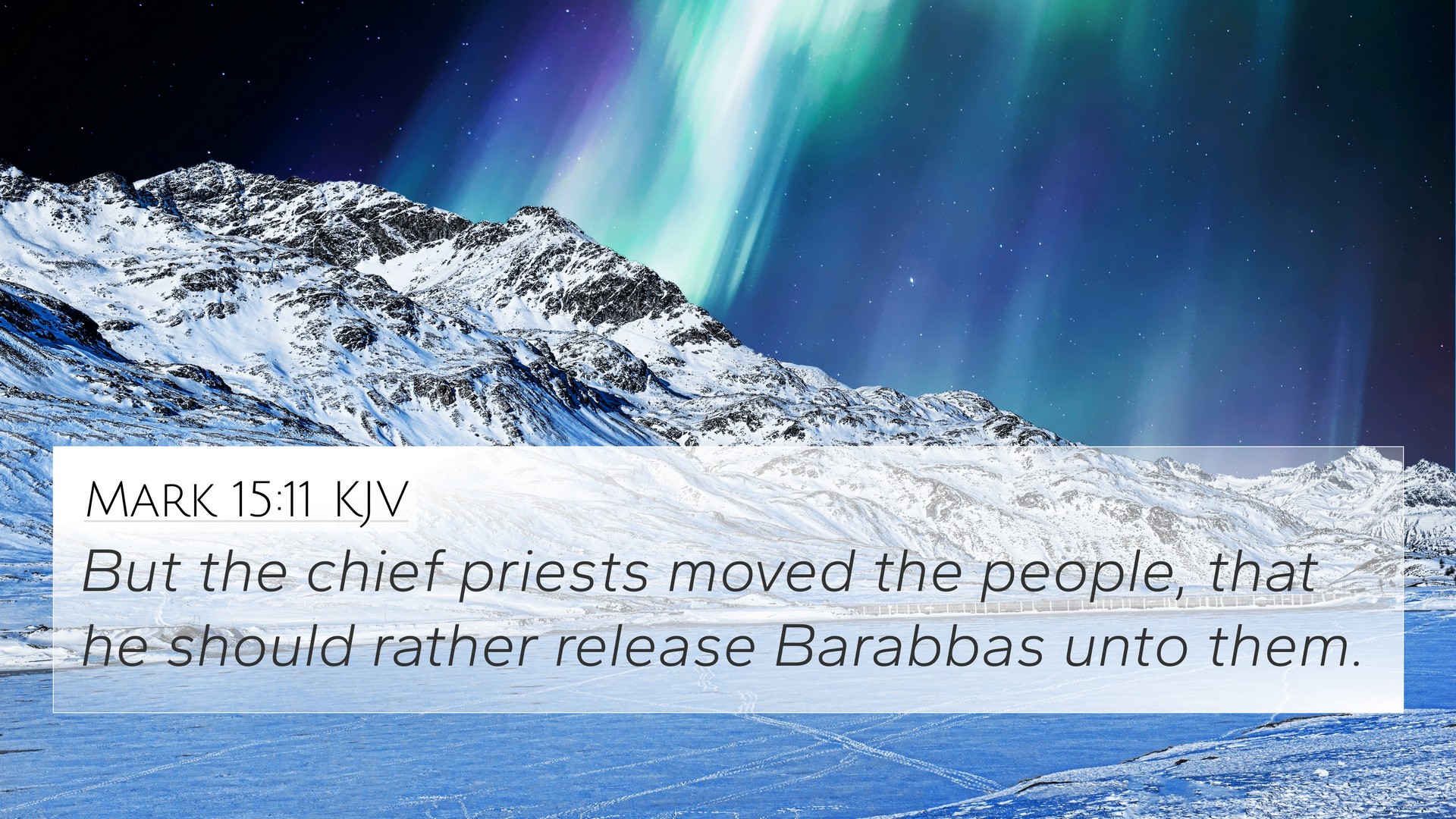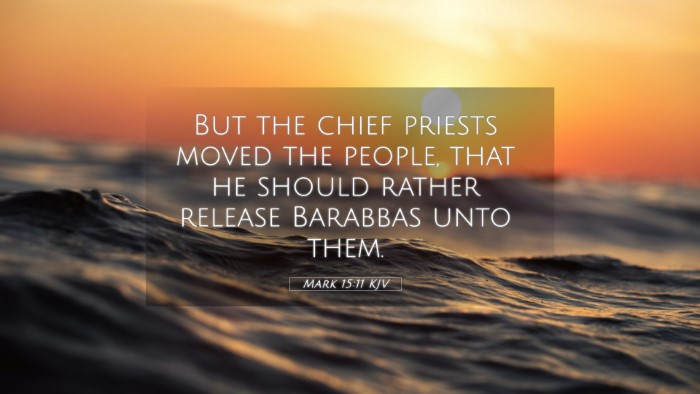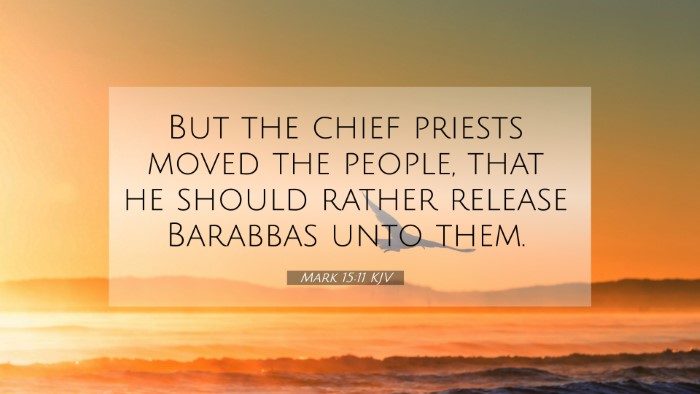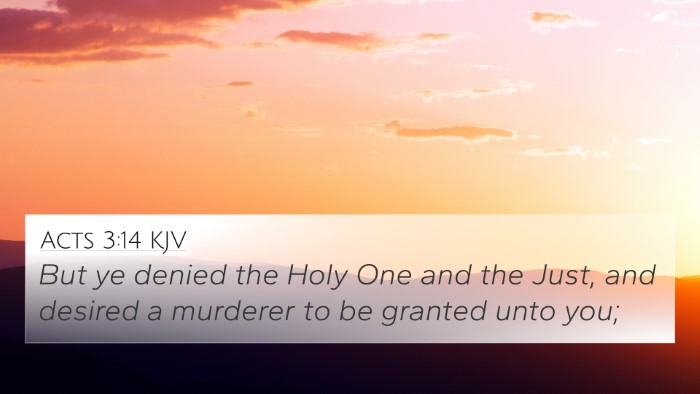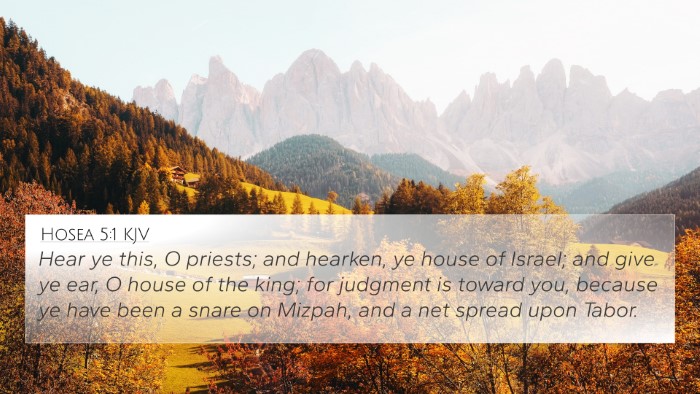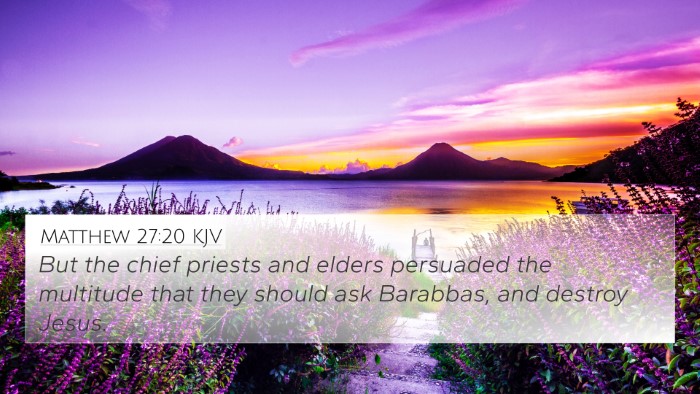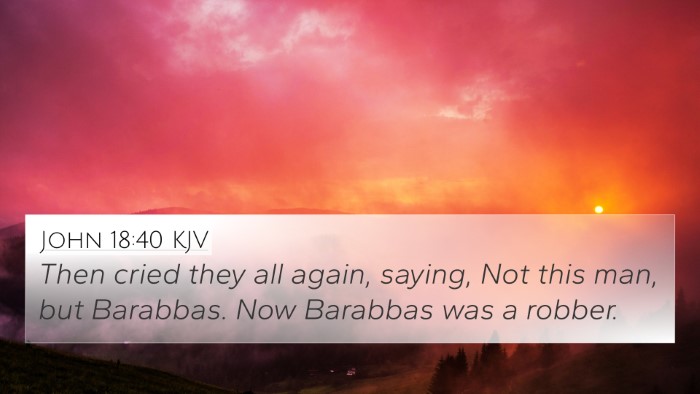Understanding Mark 15:11
Mark 15:11 states: "But the chief priests moved the people, that he should rather release Barabbas unto them." This verse occurs at a critical juncture during the trial of Jesus, as the people are confronted with a choice between the innocent Jesus and the notorious criminal Barabbas.
Contextual Background
In this passage, political and religious leaders manipulate public opinion to achieve their goals. The chief priests, who are threatened by Jesus' growing influence and teachings, instigate the crowd to call for Barabbas' release instead of Jesus. This reflects not only the animosity towards Jesus but also the depths of human depravity and the dynamics of mob mentality.
- Moral Implications: The choice between Barabbas and Jesus symbolizes the conflict between good and evil, right and wrong, as well as the consequences of societal pressure.
- Character Insights: This passage reveals the corrupt nature of religious authorities who prioritize their standing over truth and justice.
- Societal Dynamics: The manipulation of the crowd highlights the dangers of following the masses without discerning the truth.
Commentary Insights
Matthew Henry's Commentary: Henry notes that the chief priests incited the people, illustrating how those in power can easily sway opinions. They are shown to have a premeditated agenda to secure Jesus' condemnation, showcasing the pretense of public trial where the result was rather predetermined.
Albert Barnes' Commentary: Barnes emphasizes the severe choice laid before the crowd. They were not just choosing a criminal but rejecting their Messiah. He elaborates on the significance of Barabbas as a representation of sin and lawlessness, highlighting the tragic irony that the one who was innocent was delivered to death while the guilty one was set free.
Adam Clarke's Commentary: Clarke provides insight on the cultural context, noting how the people were likely stirred by emotional rhetoric rather than rational judgment. He suggests that the leaders instilled fear and a sense of loyalty to the existing order over the truths of Jesus’ message.
Bible Cross-References
- Matthew 27:21 - This passage shows a similar account of the choice offered to the crowd — further establishing the connection between these Gospels.
- John 18:40 - This verse presents the people’s response to Pilate's question about whom to release.
- Luke 23:18 - Luke provides additional details about the people's demand for Barabbas' release.
- Isaiah 53:3 - This verse prophetically depicts Jesus as the "man of sorrows," rejected by men.
- John 1:11 - Reflecting the theme of Jesus being rejected by His own people.
- Galatians 6:7 - Emphasizes the principle of sowing and reaping, which ties to the choices made in rejecting Christ.
- Romans 5:8 - Illustrates God's love through Christ’s sacrifice despite humanity's sinfulness.
Thematic Connections Between Bible Verses
This verse invites deep thematic exploration across Scripture, showcasing the repeated occurrence of choice between good (Christ) and evil (Barabbas). The inter-Biblical dialogue is rich, revealing various facets of human nature, divine sovereignty, and the unfolding of redemptive history.
Conclusion
Mark 15:11 serves as a poignant reminder of the choices humanity faces in the presence of truth. It encourages readers to consider the weight of their decisions regarding faith and morality while providing a foundation for deeper Biblical study through cross-referencing other verses.
